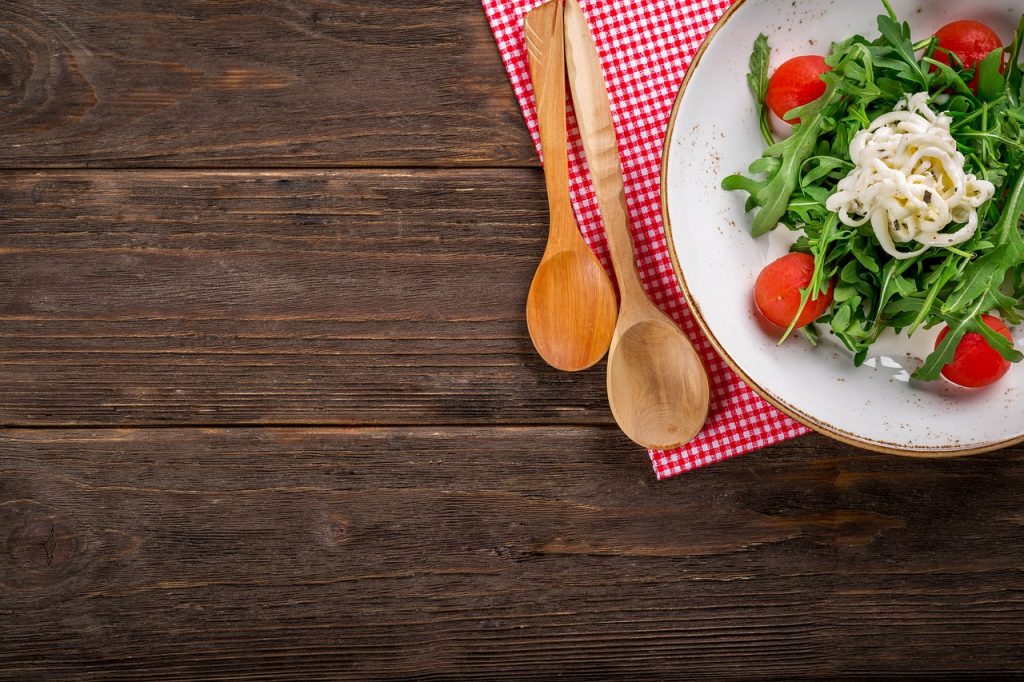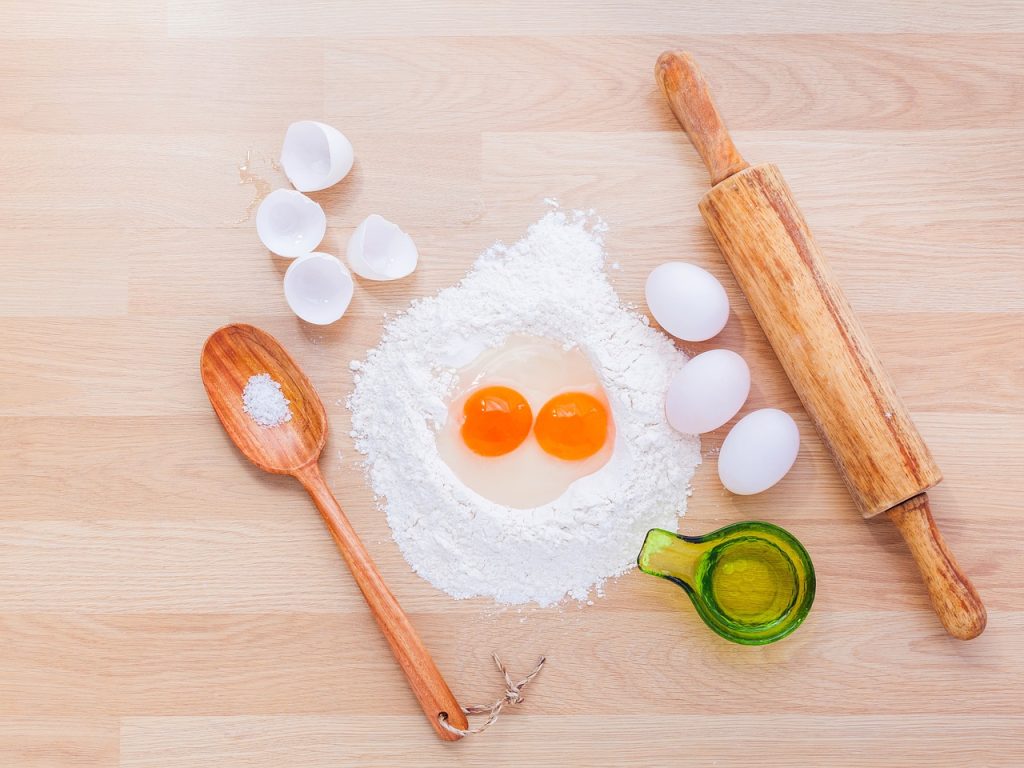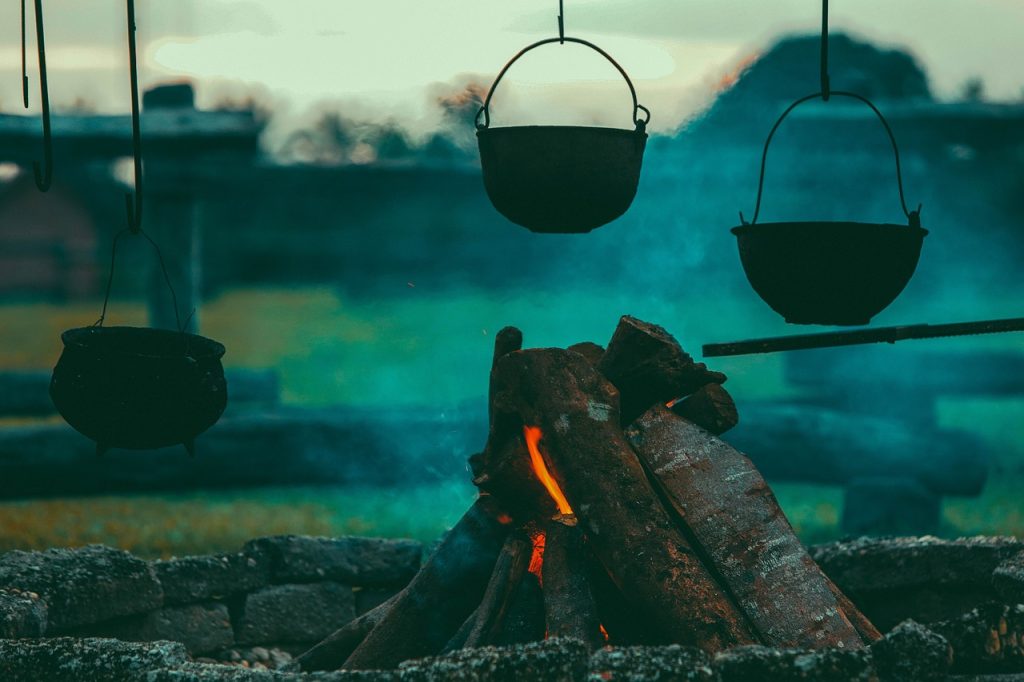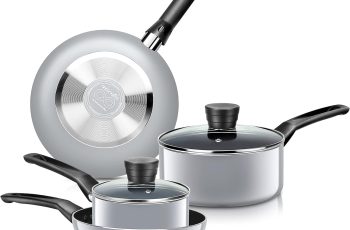Ad Blocker Detected
Our website is made possible by displaying online advertisements to our visitors. Please consider supporting us by disabling your ad blocker.
In today’s fast-paced world, finding efficient and effective methods of food preservation is essential. One method that has gained popularity is utilizing a pressure cooker for canning and preservation. This article explores the benefits and considerations of using a pressure cooker for these purposes, including its ability to safely store food for extended periods of time while maintaining its flavor and nutritional value. Discover how this handy kitchen tool can revolutionize your approach to food storage and enhance your culinary experience.

Benefits of Using a Pressure Cooker for Canning and Preservation
Canning and preservation have long been practiced as a means of extending the shelf life of various foods. With the advancement of technology, pressure cookers have become increasingly popular and efficient tools for this purpose. Here are some of the key benefits of using a pressure cooker for canning and preservation.
Saves time and energy
One of the most significant advantages of using a pressure cooker for canning and preservation is the amount of time and energy it can save. Pressure cookers rely on high pressure and temperature to cook food quickly and thoroughly. This means that the canning process can be completed much faster compared to traditional methods. This time-saving aspect is particularly beneficial when dealing with large quantities of food or during busy canning seasons.
Preserves nutrients
When it comes to food preservation, maintaining the nutritional value of the produce is of utmost importance. Pressure cookers excel at this by utilizing the power of steam and high pressure to lock in the essential nutrients. By canning food using a pressure cooker, you can preserve the vitamins, minerals, and enzymes that are often lost through other preservation methods such as boiling or freezing. This ensures that your canned goods retain their nutritional value, providing you with healthy and nutritious meals throughout the year.
Reduces spoilage
Spoilage is a common concern when it comes to food preservation. However, by using a pressure cooker for canning, you can significantly reduce the risk of spoilage. The high temperature and pressure inside the cooker create an environment that is not conducive to the growth of bacteria, yeasts, and molds. This effectively extends the shelf life of the canned goods, allowing you to enjoy them for an extended period without worrying about spoilage or foodborne illnesses.
Allows for long-term storage
Long-term storage is a key objective of any preservation method, and pressure canning excels in this area. The airtight seal created during the pressure canning process prevents air and moisture from entering the canned jars, protecting the food from spoilage. As a result, pressure canned foods can be safely stored for several years without a significant loss in quality or taste. This makes pressure canning an excellent choice for individuals who wish to stock up on homemade preserves, enabling them to enjoy homegrown flavors even during the off-season.
Choosing the Right Pressure Cooker
When it comes to pressure canning, selecting the right pressure cooker is crucial. Here are a few factors to consider when choosing a pressure cooker for canning and preservation.
Capacity
The capacity of the pressure cooker is an important factor to consider, as it determines how much food you can process at once. It is recommended to choose a pressure cooker with a capacity that matches your canning needs. A smaller pressure cooker may not be sufficient for large-scale canning projects, while a larger one may be unnecessarily bulky for smaller batches. Assess your canning requirements and select a pressure cooker with an appropriate capacity to ensure efficient and effective canning.
Material
The material of the pressure cooker is another critical aspect to consider. Most pressure cookers are made of either stainless steel or aluminum. Stainless steel pressure cookers are durable and resistant to stains, scratches, and corrosion. They also tend to distribute heat evenly, ensuring thorough cooking. On the other hand, aluminum pressure cookers are lightweight and conduct heat more efficiently. While both options have their advantages, stainless steel pressure cookers are generally recommended for canning purposes due to their durability and longevity.
Safety features
Pressure cookers can be potentially dangerous if not used correctly. To ensure safe and hassle-free pressure canning, it is essential to choose a pressure cooker with appropriate safety features. Some key safety features to look for include pressure release valves, locking systems, and secure sealing mechanisms. These features help prevent accidents, such as explosions or scalding, by releasing excess pressure and ensuring a tight seal. Additionally, opt for models that come with clear and comprehensive user manuals, as well as detailed instructions for pressure canning.
Preparation for Pressure Canning
Before delving into the pressure canning process, proper preparation is essential. Here are the necessary steps to follow before commencing pressure canning.
Gather necessary equipment
To ensure a smooth and efficient pressure canning process, gather all the necessary equipment beforehand. This typically includes a pressure canner, jars, lids, bands, a jar lifter, a canning funnel, a ladle, a bubble remover and headspace tool, a timer, and a sharp knife. It is crucial to ensure that all the equipment is clean, in good condition, and appropriate for safe canning.
Select and prepare jars
Choosing the right jars for pressure canning is vital. Opt for jars specifically designed for canning and ensure they are free of cracks, chips, or dents. Ensure that the jars and lids are clean and sterilized by washing them with hot, soapy water and then placing them in boiling water for a few minutes. Keep the jars and lids hot until they are ready to be filled to prevent breakage and achieve a proper seal.
Prepare the foods for canning
Properly preparing the foods that you intend to can is essential for quality and safety. Wash all fruits and vegetables thoroughly under running water to remove any dirt or debris. Trim off any bruised or damaged portions and cut the produce into appropriate sizes for the specific canning recipe. Additionally, it is important to follow guidelines and recipes from trusted sources to ensure that all necessary steps for safe canning are followed.
Steps for Pressure Canning
Once the preparation is complete, you can move on to the pressure canning process. Here are the key steps involved in pressure canning.
Preparing the pressure canner
Before you begin filling the jars, ensure that the pressure canner is clean and in good working condition. Examine the gasket, valves, and safety features to make sure everything is functioning correctly. Add the recommended amount of water to the pressure canner according to the manufacturer’s instructions. This water will create the necessary steam for pressurizing the canner. Place the filled jars on the canner rack, ensuring they are not touching each other or the sides of the canner.
Filling the jars
Using a canning funnel, carefully ladle the prepared food into the hot jars, leaving the specified headspace mentioned in the canning recipe. Headspace refers to the empty space between the food and the top of the jar. Proper headspace allows for expansion during the canning process and ensures a proper seal. Use a bubble remover and headspace tool to remove any air bubbles by running it gently between the food and the inside wall of the jar. Wipe the jar rim with a clean, damp cloth to remove any residue or food particles.
Ensuring proper sealing
After filling the jars, place the lids on top and screw on the bands just until fingertip-tight. It is crucial not to overtighten the bands to allow for air to escape during processing. The heat and pressure during canning will create a vacuum inside the jars, pulling down the metal lids and forming a seal. As the jars cool after processing, you will hear a “ping” sound, indicating that the jars have successfully sealed. Press down on the center of the lid to check if it is concave and does not flex before storage.
Processing the jars in the pressure cooker
Carefully load the filled and sealed jars into the pressure canner, ensuring they are evenly distributed and do not touch each other or the sides of the canner. Secure the lid onto the canner according to the manufacturer’s instructions, making sure the gasket is in place and the locking mechanism is engaged. Adjust the heat settings to bring the canner to the required pressure as mentioned in the canning recipe. Once the desired pressure is reached, begin timing the processing period. Monitor the pressure and make adjustments as needed during the recommended processing time. After the processing time is complete, turn off the heat and allow the canner to cool naturally. Do not try to force-cool the canner or remove the lid prematurely, as this can be dangerous.

Tips for Successful Pressure Canning
To ensure successful pressure canning, consider the following tips:
Follow a trusted recipe
It is crucial to use trusted recipes specifically developed for pressure canning. Reliable sources such as reputable canning guides, cookbooks, and extension services provide tested recipes that include the necessary processing times and pressures for different foods. Following these recipes precisely will help ensure safe and high-quality results.
Properly adjust for altitude
Altitude can affect the pressure required for canning. At higher altitudes, water boils at lower temperatures, which means that the pressure inside the canner must be adjusted accordingly. Referring to altitude adjustment tables or contacting your local extension service can provide you with the necessary information to make precise adjustments for altitudes above sea level.
Allow for adequate processing time
Proper processing time is crucial to ensure that the canned food is heated thoroughly and all harmful microorganisms are destroyed. Be sure to follow the recommended processing times mentioned in the recipe and adjust them as necessary for your altitude. Cutting corners on processing time can lead to undercooked food and potential spoilage.
Inspect and test the seals
After the pressure canner has cooled down, carefully remove the jars and inspect their seals. Gently press down on the center of each lid. If the lid does not flex or pop up and down, it has successfully sealed. Alternatively, you can check for a concave lid by pressing the center. If you encounter a lid that did not seal properly, refrigerate and consume the contents within a few days or reprocess the jar immediately using a new lid.
Safety Precautions
When pressure canning, it is crucial to prioritize safety. Here are some essential safety precautions to follow.
Understand the pressure canner instructions
Before using a pressure canner, carefully read and understand the manufacturer’s instructions. Familiarize yourself with the specific features and functions of your pressure canner to ensure safe and effective results. Follow the instructions precisely, including the recommended amounts of water, processing times, and pressure settings.
Release pressure carefully
After completing the processing time, do not attempt to release the pressure from the canner immediately. Allow the canner to cool naturally, and the pressure to drop naturally. Once the pressure indicator shows that the pressure has reached zero, it is safe to remove the lid. Always follow the manufacturer’s instructions for proper pressure release to prevent accidents or injuries.
Avoid overfilling the pressure cooker
Overfilling the pressure cooker can lead to spills and potentially harmful situations. It is important to leave enough headspace in the jars to allow for expansion during the canning process. Follow the recommended headspace guidelines mentioned in the recipe to prevent the contents from boiling over and interfering with the sealing process.
Inspect for damage or wear
Regularly inspect your pressure canner for any signs of damage or wear. Cracked gaskets, damaged sealing mechanisms, or malfunctioning valves can compromise the safety of the canner. Do not use a pressure canner that shows signs of damage, and promptly replace any worn-out or faulty parts.

Alternative Methods for Preservation
While pressure canning is an effective method for food preservation, there are alternative methods that can be used depending on the type of food and personal preferences. Here are a few alternative preservation methods.
Water bath canning
Water bath canning is suitable for high-acid foods such as fruits, pickles, and relishes. Unlike pressure canning, water bath canning relies on the high heat of boiling water to create a seal and kill any bacteria or microorganisms. Water bath canning is a simpler process compared to pressure canning, but it may not be suitable for low-acid or non-acidic foods.
Freezing
Freezing is a popular method for preserving a wide variety of foods. It involves quickly freezing the food at sub-zero temperatures, which helps maintain the quality and freshness of the produce. Freezing is a convenient option for preserving fruits, vegetables, meat, and prepared meals, but it may require additional freezer space and can result in texture changes in some foods.
Drying
Drying, also known as dehydration, involves removing moisture from food to inhibit the growth of bacteria, yeast, and molds. Dried foods can be stored for extended periods and used in various dishes. This preservation method is particularly suitable for fruits, vegetables, herbs, and meat. Drying can be done using a food dehydrator, an oven, or by sun-drying, depending on the availability of equipment and personal preferences.
Storage and Shelf Life of Pressure Canned Foods
Proper storage conditions and knowledge of the shelf life of pressure-canned foods are crucial for maintaining their quality and safety.
Proper storage conditions
After the pressure canning process is complete, allow the canned goods to cool completely before storing them. Find a cool, dark, and dry location to store the jars. Avoid areas that are exposed to direct sunlight or fluctuations in temperature, as these can affect the quality of the canned food. Ensure that the storage area is free from pests and well-ventilated.
Shelf life guidelines
The shelf life of pressure-canned foods depends on various factors such as the type of food, the processing time, the sealing quality, and storage conditions. Generally, properly sealed and stored pressure-canned foods can safely be stored for up to one year or even longer. However, it is important to regularly inspect the seals and contents of the jars for any signs of spoilage. Discard any cans that show signs of spoilage, such as bulging lids, strange odors, or visible mold.
Signs of spoilage
It is essential to recognize the signs of spoilage to ensure the safety of your pressure-canned foods. Any cans that show bulging lids, leakage, odd smells, or visible mold should be discarded. Additionally, if the food inside the jar appears discolored, slimy, or has an off-putting texture, it is best to err on the side of caution and refrain from consuming it.
Pressure Cooker Canning Recipes
Pressure cooker canning opens up a world of possibilities for preserving various types of foods. Here are a few examples of pressure cooker canning recipes:
Vegetables
Pressure canning allows you to preserve a wide range of vegetables, providing you with a pantry stocked with homegrown produce for all seasons. Some popular pressure canning vegetable recipes include canned tomatoes, green beans, carrots, beets, and corn.
Fruits
Fruits can also be effectively preserved using a pressure cooker. From jams and jellies to canned peaches, pears, and applesauce, there are numerous delicious recipes available for canning fruits. These canned fruits can be enjoyed year-round, even when they are out of season.
Soups and stews
Pressure canning is not limited to just individual fruits and vegetables. It is also possible to can complete meals such as soups, stews, and chili. By pressure canning these hearty recipes, you can have a ready-to-eat meal that is both delicious and convenient. Simply heat and enjoy the comforting flavors of homemade soups or stews at any time.
Conclusion
Using a pressure cooker for canning and preservation offers several benefits, including time and energy savings, nutrient preservation, reduced spoilage, and long-term storage capabilities. By choosing the right pressure cooker and following the proper preparation and canning procedures, you can safely preserve a wide variety of foods. Remember to prioritize safety, understand the instructions, and follow trusted recipes to ensure successful and enjoyable pressure canning experiences. With the proper techniques and equipment, you can enjoy the rewards of homegrown and homemade preserves throughout the year.

